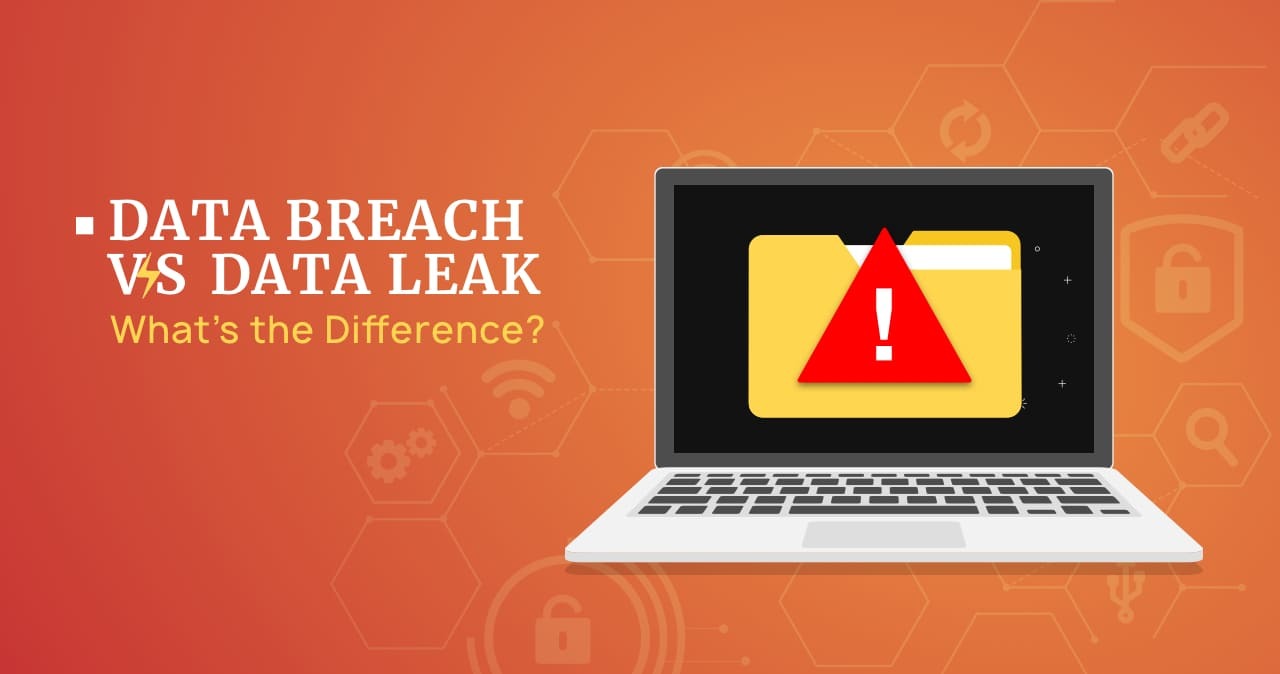The terms “data breach” and “data leaks” are often used interchangeably, but they are not same enough for this to be a correct application. Sure they share similarities, but they still refer to different cybersecurity events.
Data breach vs. Data leaks – Are they different?
Data breaches and data leaks are events of a similar pattern — both suggest unauthorized parties gaining access to information they should not have access to. The main difference between these two terms is in the circumstances. Data breach is a deliberate disclosure of confidential information. That occurs as a result of actions intended to do so. In a data breach, attackers purposefully attack a system, gain access, and often steal or compromise data. It involves an active intrusion such as hacking, phishing, or exploiting vulnerabilities in the system.
On the other hand, data leaks usually occur unintentionally. This term refers to the accidental disclosure of sensitive information by an entity (usually an employee). There is no malicious intent or direct attack here, it usually occurs due to human error, poor security practices, or misconfiguration. I.e, a data breach occurs when information is accidentally made publicly available. For example, it could be an email accidentally sent to the wrong place containing sensitive information.
Causes of Data Breaches
As I mentioned above, data breaches are facilitated by certain actions from attackers. Typically, attackers exploit security vulnerabilities in the target systems to penetrate the network. Another popular method in such cases is brute force, which easily picks up weak or easily guessed passwords for employee accounts. And all this is accompanied by phishing emails and social engineering techniques.
In addition to “contactless” methods, attackers can use physical access. This may happen in several ways, with one of the key options being attacking through a third party company or a supply chain. Crooks hack/bribe/persuade partners, suppliers or contractors who have access to the required information to steal and pass it on to them. Another option here is to use an insider threat. The method is completely identical to the previous one, except that the person who has access to the required information comes from within the company. Most often they are employees, who are dissatisfied with something and are willing to mischief their company.
Causes of Data Leaks
As for data leaks, the most common cause is the misconfiguration of servers and cloud services. Wrong configured access settings can unintentionally expose sensitive information to someone who should not have it. The next common cause of data leak is human error. An employee may accidentally share a confidential document to the wrong recipient. They also can accidentally include all employees in a mailing, or even outsiders, expanding the leak even more.
Just like with data breach, data leaks can also happen through physical access. For example, an employee may lose/forget/leave a device (such as a flash drive, hard drive, or laptop) in a public place. If the laptop has a weak or no password, it’s a jackpot for whoever finds it. Apart from digital information, this also applies to physical documents or securities that may also be lost or left in a public place.
What is Worse?
In fact, both options are very dangerous and can lead to irreversible consequences. In a data leak, there’s a possibility that no one has detected or accessed the leaked data yet. A data breach, however, guarantees that attackers have gained access to the information. In addition, the latter case can be blamed on cunning attackers who were able to bypass security systems.
With a data leak, the company itself is primarily at fault due to inadequate security measures. While both incidents harm an organization’s reputation, a data breach tends to have more severe consequences. If the leak is confirmed, it will likely draw significant media attention and the organization, depending on the content of the data that leaked, will likely be involved in legal action.
Protect Your Data
For everyone who takes care about their privacy, data exposure of any form, amount and reason is a highly unpleasant situation. And unfortunately, not a lot of companies offer you to track or remove personal data from their servers. The most accessible protection approach here is passive reactive one. This approach means you can implement some measures beforehand, with most actions happening after the attack case.
What this means in practice is that you should apply the best possible security measures to all the accounts. 2FA/MFA, recovery emails or devices, new login notifications – all this will help staying aware about potential fishy activity. You can as well spoof some of the non-important data that the service asks you to fill. And, obviously, keep track of the latest security news: this will get you informed on the latest “security incidents”, as companies like to call cyberattacks.





